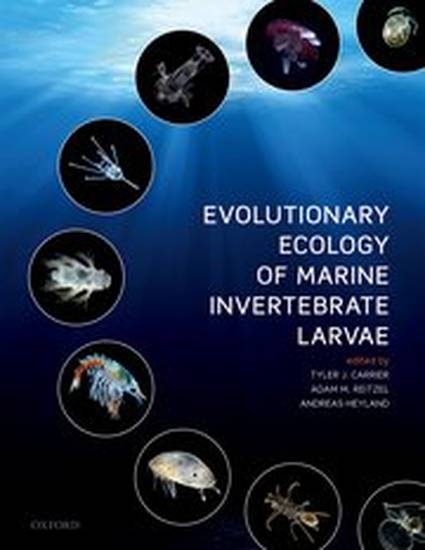
Contribution to Book
Chapter 5: Asexual Reproduction of Marine Invertebrate Embryos and Larvae
Evolutionary Ecology of Marine Invertebrate Larvae
(2017)
Abstract
The life histories of marine invertebrates are incredibly diverse and provide a wealth of opportunities to develop and test hypotheses about how and why modes of reproduction, development, and behavior evolve within and among lineages. With respect to the evolution of reproductive and developmental mode, phylogenetic, adaptive, and functional hypotheses presented over the past century have predominantly focused on the evolution of reproductive traits (e.g., free spawning, brooding, encapsulation; Rouse and Fitzhugh, 1994), nutritional mode of larvae (e.g., planktotrophy and lecithotrophy; Strathmann, 1985; Hart et al., 1997), and developmental form (e.g., larval morphology; Jeffery and Swalla, 1992; direct and indirect development; Wray, 1995; McEdward and Janies, 1997). Frequently, but not exclusively, these hypotheses have been tied to changes in per-offspring investment (Emlet et al., 1987; Sinervo and McEdward, 1988; Emlet and Hoegh-Guldberg, 1997), and influential models of per-offspring investment often serve as a framework for studies of the evolution of developmental modes (Vance, 1973; Christiansen and Fenchel, 1979; Levitan, 2000). Phylogenetic assessment of the evolution of character states within lineages has revealed frequent shifts among life histories traits (McHugh and Rouse, 1998, and references therein). In addition to these macroevolutionary changes among species, the life history exhibited by individuals may change in response to one or more environmental features (life history plasticity). Plasticity in the evolution of life histories has also been addressed with respect to such aspects of sexual reproduction as facultative progenesis, where larval stages develop gametes (Poulin, 2001), and poecilogony, where one individual or species exhibits different reproductive modes (Krug, 1998). One area of life history plasticity that is far more common, but has received less attention, is asexual reproduction. Asexual reproduction during development occurs in most marine phyla (reviewed by Alvarado, 2000; Blackstone and Jasker, 2003) and may occur at multiple stages during the indirect development of some species. Despite, or perhaps because of, its broad distribution among phyla, diverse explanations for the adaptive value or evolutionary significance of asexual reproduction as a life history strategy have been offered. Adaptive explanations include the following: as a method to weather harsh environments (e.g., gemmules in sponges, statoblasts in bryozoans); as a short-term solution for escaping mutation load (Hurst and Peck, 1996); as a means to colonize and/or adapt to changing or new habitats (Maynard Smith, 1971); or as a means to persist at low population sizes (Gerber and Kokko, 2016). Several authors have addressed adult asexual propagation and regeneration across the animal kingdom (e.g., Ferretti and Geraudie 2001), but asexual propagation is also employed by pre-adult stages. In this chapter we aim to synthesize the literature describing asexual reproduction by embryonic and larval stages of marine invertebrates, with a particular focus on echinoderms, where the ecological and evolutionary costs and benefits of diverse modes of clonal replication have been most studied. We conclude with a list of open questions that may provide fruitful future research avenues to better understand this understudied life history trait of marine invertebrates.
Disciplines
Publication Date
Winter December 7, 2017
Editor
Tyler Carrier, Adam Reitzel, and Andreas Heyland
Publisher
Oxford University Press
ISBN
9780198786962
Publisher Statement
This material was originally published in The Evolutionary Ecology of Marine Invertebrate Larvae edited by Edited by Tyler Carrier, Adam Reitzel, and Andreas Heyland. Excerpt provided here with permission from Oxford University Press. For permission to reuse this material please visit OUP academic rights.
Citation Information
William Jaeckle, Jonathan D. Allen and Adam M. Reitzel. "Chapter 5: Asexual Reproduction of Marine Invertebrate Embryos and Larvae" Evolutionary Ecology of Marine Invertebrate Larvae (2017) p. 67 - 81 Available at: http://works.bepress.com/jaeckle/71/
